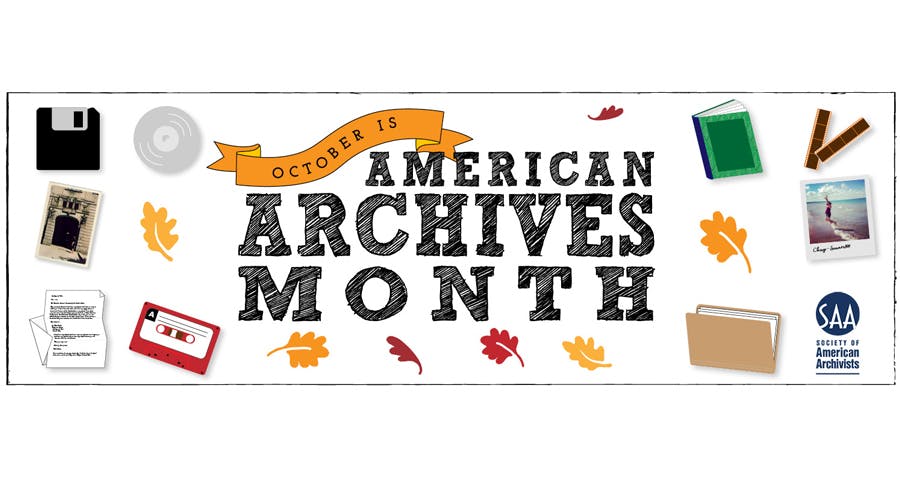
October is American Archives Month and over the last month, we took to social media to highlight our indispensable and thoughtful team! We posed three questions to our 3 project archivists and 1 project librarian and we want to (re)introduce you to them by sharing their answers with you.
Why archives?
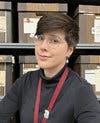
Eilene Lueck (Project Archivist): I love history, especially from an archaeological perspective. Working in archives evolved naturally out of my experience working with historical materials. Archival processing combines the thrill of rediscovering the past through what people left behind, except with more air conditioning than at an archaeological dig.
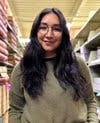
Enid (eh-NEED) Ocegueda (Project Archivist): I stumbled into the archive as an undergrad at UCR; where I found amazing treasures for a history paper I was writing – and I’ve been in archives ever since. I truly believe they are important to the retelling of history; they help shape our recollection of the past, and to the overall historical record…. It’s also a lot of fun processing collections – you just never know what you’re going to find.

Kathy Ramirez (Project Archivist): My background is in History, and I am particularly interested in methods for getting more people to really engage with the subject. The materials stored in archives offer such a dynamic and hands-on way to engage with history; working with the physical remnants of past people’s lives and historical events can be a great opportunity for people who don’t really connect with dates and events described in textbooks. Yet, so many students are either unaware of these resources or intimidated by these spaces. As a library professional, I really aim to make these resources accessible, especially to marginalized groups who were often excluded from the archival record and academic spaces.
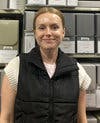
Ruth Laraway (Project Librarian): As a history major during my undergraduate education, I loved using primary source material for research. It made me feel connected to the people and places I was researching and provided wonderful insight into their lives. I knew I wanted to continue to have the opportunity to engage with historical research material and archives and libraries are an excellent place to do this. Now in my work with the Stanford Publications and Ephemera collection, I get to see snippets of people's lives every day, which I enjoy!
What is something cool or interesting you’ve found while working in University Archives?
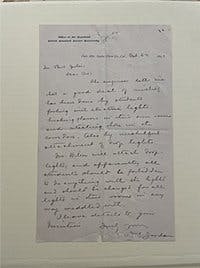
Eilene: I have a bit of an overdeveloped sense of pattern recognition, so archival material that does not quite match the rest of the collection really stands out to me. A case and point is this letter tucked away within a dense folder of Bert Fesler’s incoming correspondence about Encina Hall’s student housing fees and its operations.
On October 24, 1891, Stanford’s first president, David Starr Jordan, wrote to the first Master of Encina Hall, Bert Fesler, to discuss the students getting up to a “good deal of mischief” by messing with the light fixtures in the men’s dormitory. These moments are not often captured in secondary sources as they have little impact on Stanford's opening in the grand scheme of things. However, these kinds of letters humanize historical figures and connect us to the past on a personal level.
Enid: I’ve had a knack for coming across some pretty weird items here in the archive. Most memorable one for me is the feathered hat. It was week 1 on the job and I had been looking for a collection.
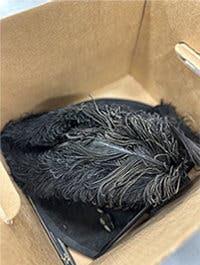
I happened to pull down the wrong box from the shelf, but it was very light in weight and I got very curious. I opened the box and immediately thought “It’s a dead rat.” It was not, in fact, a dead rat, but a feathered hat. I have since been very cautious when I pull a box that isn’t heavy because you never know what it could be.
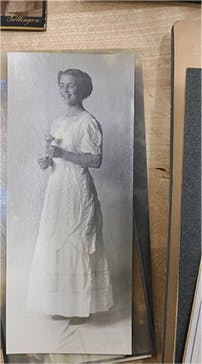
Kathy: Old photographs are always fun, and I recently got to sort through a whole box of personal photos while working with the Helen Stanford Canfield papers. Earlier photography was much more formal and posed, so it is a treat to find either candid photos or photos with people smiling and joyful.
It makes these photos seem that much more human and relatable. I also have an interest in fashion history, and love seeing trends from certain eras displayed in photos!
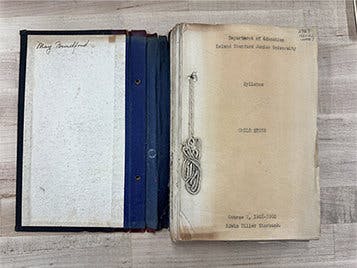
Ruth: I love coming across handwritten material, the older the better, and trying to decipher what is written. This is not always easy and seeing how handwriting has evolved is interesting. This syllabus and notebook from 1901 belonged to a student named May Bradford and is from her “Child Study” course in the Department of Education. While you can see the occasional doodle, she was a detailed note-taker. No matter what the subject is, knowing that I am touching something that someone sat down and took the time to write over a 100 years ago is exciting!
What is the best Halloween candy?
- Eilene: Jelly beans are the best! The bad flavors make the good flavors taste better.
- Enid: In this exact order: Twizzlers, Snickers, Peanut M&Ms.
- Kathy: Definitely gummy bears or Lifesaver gummies! Mini peanut butter cups, if it must be chocolate.
- Ruth: Starbursts and Twix.